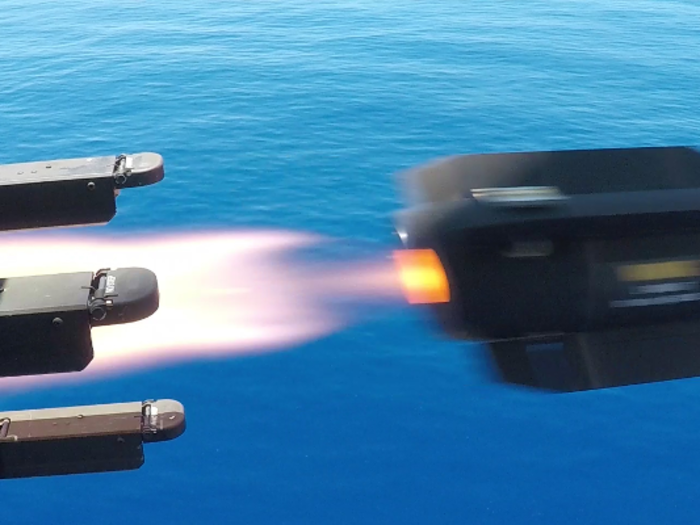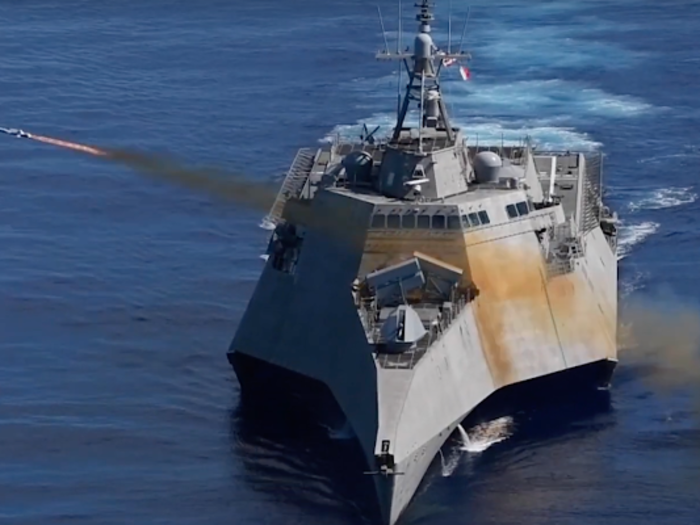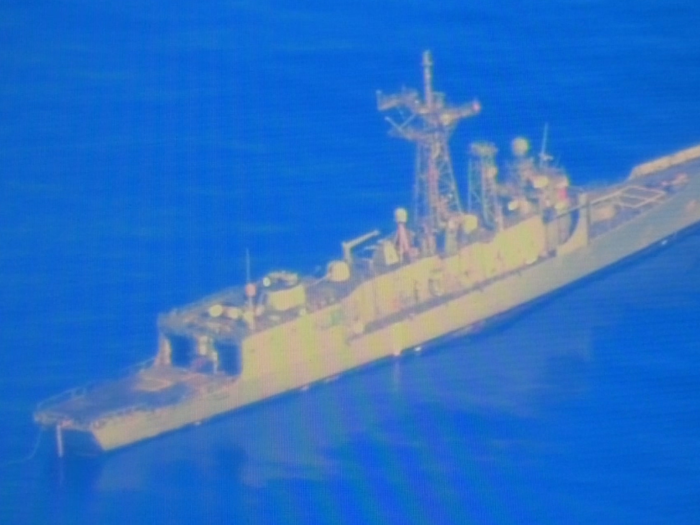An MH-60S Sea Hawk helicopter fired Hellfire missiles at the USS Ford.
The Hellfire missile is a precision-strike weapon and can be fired from airborne systems, like the MH-60S Seahawks used in Tuesday's SINKEX, or from vessels like an LCS.
B-52 bombers from the US Air Forces' Expeditionary 69th Bomb Squadron also dropped ordnance during the exercise, and Republic of Singapore multi-role stealth frigates RSS Formidable and RSS Intrepid fired surface-to-surface Harpoon missiles at the Ford.
The Gabrielle Giffords is the first LCS to perform an integrated NSM mission in the Indo-Pacific region.
Littoral combat ships can carry MH-60R/S Sea Hawk helicopters and unmanned aerial vehicles (UAVs) aboard, as well as Mark 110 57 mm guns, and .50-caliber machine guns.
Many littoral combat ships have Harpoon missiles aboard, which don't have the long range of the NSM.
Littoral combat ships designed for use either in the open ocean or closer to shore, in littoral waters. They typically perform mine countermeasures, anti-submarine warfare, and surface warfare but are capable of performing a variety of missions, according to the Navy.
The Navy follows very specific protocols when performing a so-called SINKEX.
Decommisioned vessels like the Ford that are used in these kinds of exercises are referred to as "hulks."
They must be sunk in at least 6,000 feet of water and at least 50 nautical miles from land.
Before they're sunk, they're cleaned of transformers and capacitors, as well as of trash, petroleum, and harmful chemicals like polychlorinated biphenyls (PCBs), and mercury and materials containing fluorocarbons, according to a Navy release.
Watch the full video here:



